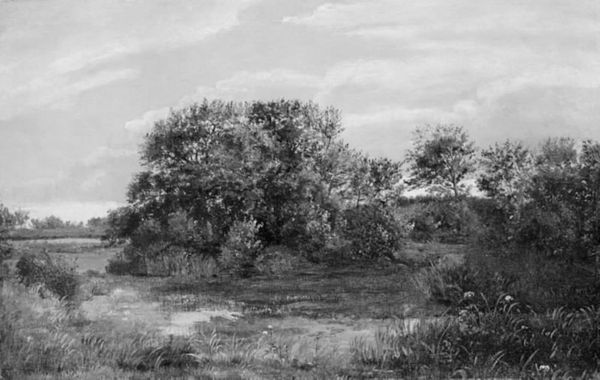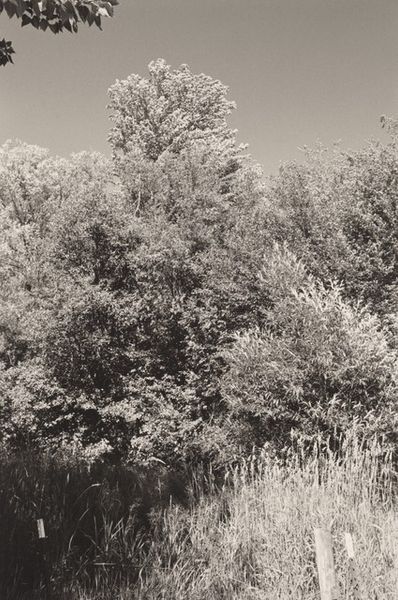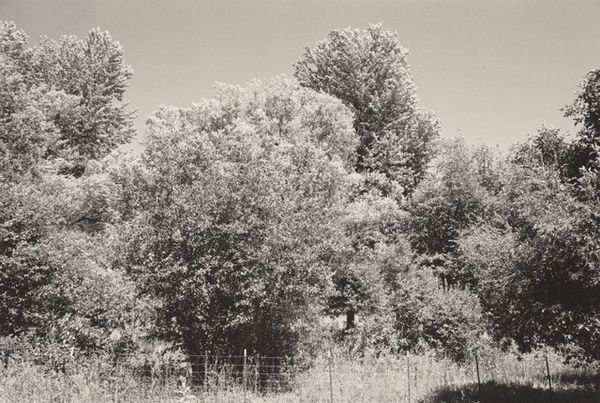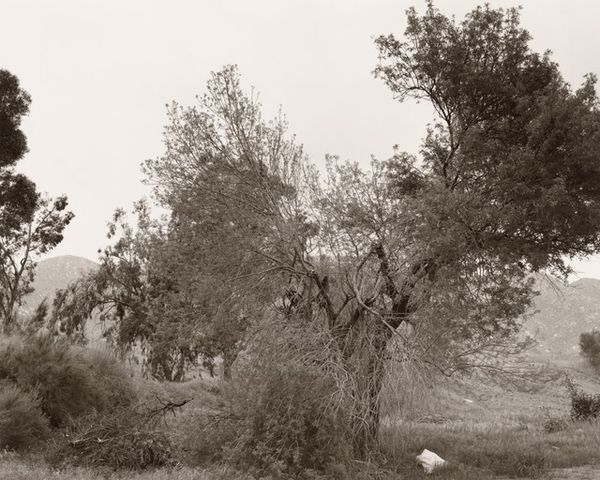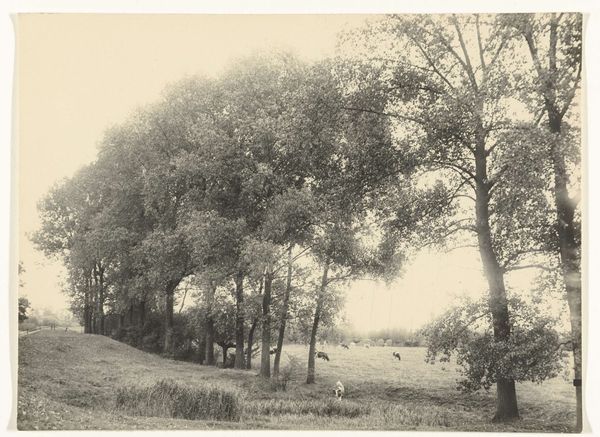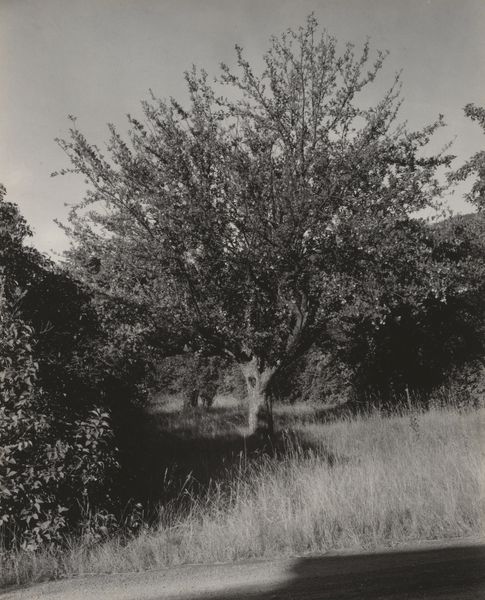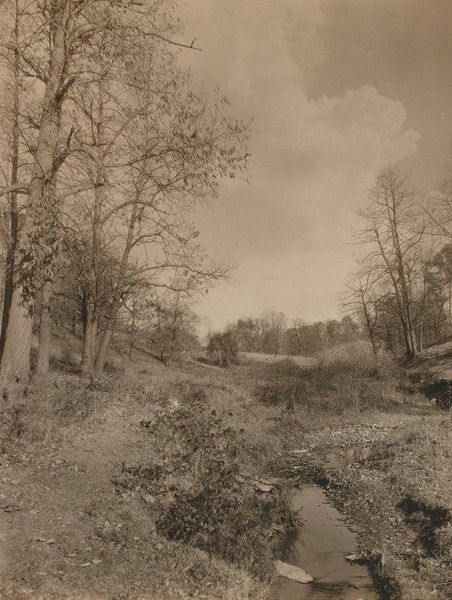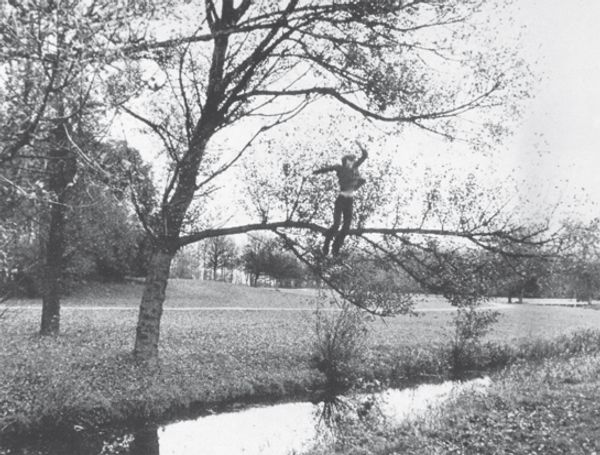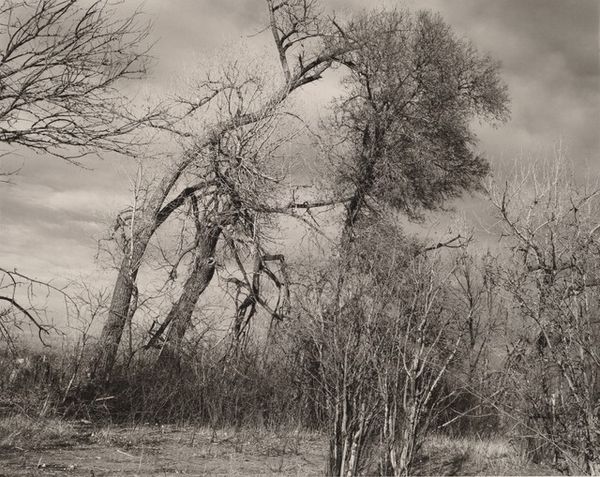
photography, gelatin-silver-print
#
contemporary
#
black and white photography
#
nature photography
#
landscape
#
photography
#
outdoor scenery
#
gelatin-silver-print
#
monochrome photography
#
realism
#
monochrome
Dimensions: image: 29 × 22.8 cm (11 7/16 × 9 in.) sheet: 35.3 × 27.6 cm (13 7/8 × 10 7/8 in.)
Copyright: National Gallery of Art: CC0 1.0
Curator: Here we have Robert Adams' gelatin silver print, "Irrigation canal, Larimer County, Colorado," created in 1995. It’s a scene captured in monochrome. Editor: There's a hushed serenity about this composition. The way the boughs frame the landscape in the distance almost creates an illusion. Curator: Absolutely, notice how the organic forms of the foliage in the foreground create a natural frame around a clearly structured plane behind them. The lines created by the waterline juxtaposed against the soft cloud-scape… fascinating. It’s as if Adams wants us to dissect the reality of this space, how constructed it all is, despite the pastoral scene. Editor: Do you mean constructed through human engineering? Curator: Precisely. The presence of the canal itself as a deliberate modification of the natural landscape. It all invites contemplation about humanity's indelible influence. In the broader context of his work, Adams repeatedly explores the tension between pristine landscape and human alteration across the American West. Editor: Looking at it in this way, one can almost feel the undercurrent of the environmental movement emerging. Black and white intensifies that sense of displacement or perhaps disruption? The softness in some sections makes me think of 19th century landscape painting. Curator: An excellent comparison! Although created much later in the 20th century, the gelatin silver medium allows him that textural range to call back to the traditional techniques. And, speaking of materiality, let's examine how Adams uses grayscale to highlight details. Every blade of grass, the ripples in the water—rendered in distinct shades. It adds depth to the composition, preventing it from becoming visually monotonous. Editor: I concur; he does something special with light. The subdued tonality helps capture the unvarnished reality, making us think about the ecological and ethical questions surrounding development and environmental impact in a different way. The politics of the image come into view. Curator: It's quite rare to find photographs with such an effective balance. This is more than documentation. Editor: Indeed, it's a quiet polemic, revealing through careful form how much we shape, and perhaps misshape, our surroundings. A sober reflection.
Comments
No comments
Be the first to comment and join the conversation on the ultimate creative platform.

